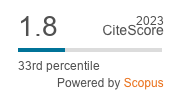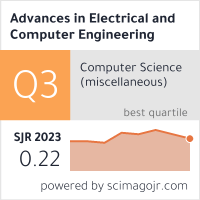| 2/2012 - 11 |
Optimized Simulation Framework for Spiking Neural Networks using GPU'sMIRSU, R. |
| View the paper record and citations in |
| Click to see author's profile in |
| Download PDF |
Author keywords
artificial intelligence, biological neural networks, GPU computing, parallel processing, spiking neural networks
References keywords
neural(15), spiking(12), networks(10), neurons(7), model(7), tiponut(4), network(4), mirsu(4)
Blue keywords are present in both the references section and the paper title.
About this article
Date of Publication: 2012-05-30
Volume 12, Issue 2, Year 2012, On page(s): 61 - 68
ISSN: 1582-7445, e-ISSN: 1844-7600
Digital Object Identifier: 10.4316/AECE.2012.02011
Web of Science Accession Number: 000305608000011
SCOPUS ID: 84865306303
Abstract
This paper presents a hardware accelerated model of a spiking neural network implemented in CUDA C. It does a short description of the mathematical model for the neural network and presents the implementation on the GPU. Additionally, it presents three methods of further accelerating the model by eliminating excess kernel launch overhead time, efficiently using shared memory and overlapping computation with data transfer. Finally, the implementation is benchmarked against an existing C++ equivalent model. |
| References | | | Cited By «-- Click to see who has cited this paper |
| [1] M.A. Bhuiyan, V. K. Pallipuram, M.C. Smith, "Acceleration of spiking neural networks in emerging multi-core and GPU architectures", IEEE International Symposium on Parallel & Distributed Processing, Workshops and Phd Forum (IPDPSW), 2010 [CrossRef] [SCOPUS Times Cited 51] [2] R Mirsu, C. Caleanu, V. Tiponut, "GPU accelerated model for liquid state machine based on spiking neurons", 17th International Conference on Soft Computing (MENDEL), Brno, Czech Rep, 2011. [3] J. M. Nageswaran, N. Dutt, J. L. Krichmar, A. Nicolau, A.V. Veidenbaum, "A configurable simulation environment for the efficient simulation of large-scale spiking neural networks on graphics processors," Special issue of Neural Network, Elsevier, vol.22, no. 5-6, pp. 791-800, July 2009 [PubMed] [4] M. A. Bhuiyan, T. M. Taha, R. Jalasutram, "Character recognition with two spiking neural network models on multi-core architectures," in IEEE Proc. CIMSVP, TN, pp. 29 - 34, Mar. 2009. [5] M. Herlihy, N. Shavit, The Art of Multiprocessor Programming Morgan Kaufmann, Burlington, MA, 2010. [6] NVIDIA CUDATM. NVIDIA CUDA C Programming Guide 3.1.1. 2010. [7] D. Kirk, W. Hwu, Programming Massively Parallel Processors Morgan Kaufmann, Burlington, MA, 2010. [8] R. Ananthanarayanan, D. Modha, "Anatomy of a cortical simulator", Proc. Int'l Conference for High Performance Computing, Networking, Storage and Analysis, Nov. 2007, pp. 1-12. [9] W. Gerstner, W. Kistler, Spiking Neuron Models, Cambridge University Press, 2002. [10] E.M. Izhikevich, "Simple model of spiking neurons", IEEE Transactions on Neural Networks, Vol.14, No.6, 2003, pp. 1569-1572 [CrossRef] [PubMed] [Web of Science Times Cited 2928] [SCOPUS Times Cited 3343] [11] E.M. Izhikevich, "Resonate and fire neurons", Neural Networks 14, pp. 883-894, 2001 [CrossRef] [Web of Science Times Cited 345] [SCOPUS Times Cited 379] [12] E.M. Izhikevich, "Which model to use for cortical neurons?", IEEE Transactions on Neural Networks (Special Issue on Temporal Coding), 2004 [CrossRef] [Web of Science Times Cited 1662] [SCOPUS Times Cited 1877] [13] W. Maass, "Networks of spiking neurons: The third generation of neural network models", Neural Networks, Vol. 10, No.9, pp. 1659-1671, 1997 [CrossRef] [Web of Science Times Cited 1764] [SCOPUS Times Cited 2067] [14] L. F. Abbott, T. B. Kepler, "Model neurons: from Hodgkin-Huxley to Hopfield", Editor: Luis Garrido, Lecture Notes in Physics, vol. 368, p.5-18, 1990 [15] I. Bogdanov, R. Mirsu, V. Tiponut, "MATLAB model for spiking neural networks", Proc. of the 13th WSEAS International Conference on Systems, Rhodes, Greece, 23-25 July, 2009, pp. 533-537. [16] R. Mirsu, V. Tiponut, I. Gavrilut, "Storing information with spiking neural networks", Proc. of the 13th WSEAS International Conference on Computers, Rhodes, Greece, 23-25 July 2009, pp. 318-322. [17] S. Wills, Computation with Spiking Neurons, PhD Dissertation, University of Cambridge, 2004. [18] R. Mirsu, V. Tiponut, "Parallel model for spiking neural networks using MATLAB", 9th International Symposium on Electronics and Telecommunications (ISETC), Timisoara, Romania, 2010, pp. 369-372 [CrossRef] [Web of Science Times Cited 1] [SCOPUS Times Cited 4] [19] W. Maass, T. Natschlager, H. Markram, "Real-Time Computing without stable states: A new Framework for Neural Computation based on Perturbation", Neural Computation, Vol. 14, No. 11, Pages 2531-2560, Nov. 2002 [CrossRef] [PubMed] [Web of Science Times Cited 2360] [SCOPUS Times Cited 2642] [20] J. Kamarainen, V. Kyrki, H. Kalviainen, M. Hamouz, J. Kittler," Invariant Gabor features for face evidence extraction", Proceedings of the IAPR Workshop on Machine Vision Applications, Nara, Japan, 2002, pp. 228-231. [21] O. Ayinde, Y .Yang, "Face recognition approach based on rank correlation of Gabor-filtered images", Pattern Recognition, vol. 35(6), pp. 1275-1289, 2002 [CrossRef] [Web of Science Times Cited 70] [SCOPUS Times Cited 87] [22] V. Kyrki, J. Kamarainen, H. Kalviainen, "Content based image matching using Gabor filtering", Proceedings of the Int. Conf. on Advanced Concepts for Intelligent Vision Systems Theory and Applications, Baden-Baden, Germany, 2001, pp. 45-49. [23] D. Martinez, E. Hugues, "A spiking neural network model of the locust antennal lobe: Towards neuromorphic electronic noses inspired from insect olfaction", Proceedings of the NATO Advance Research Workshop on Electronic Noses & Sensors for Detection of Explosives, Warwick, Coventry, U.K., 2003, pp. 209-234. Web of Science® Citations for all references: 9,130 TCR SCOPUS® Citations for all references: 10,450 TCR Web of Science® Average Citations per reference: 380 ACR SCOPUS® Average Citations per reference: 435 ACR TCR = Total Citations for References / ACR = Average Citations per Reference We introduced in 2010 - for the first time in scientific publishing, the term "References Weight", as a quantitative indication of the quality ... Read more Citations for references updated on 2024-07-20 17:52 in 57 seconds. Note1: Web of Science® is a registered trademark of Clarivate Analytics. Note2: SCOPUS® is a registered trademark of Elsevier B.V. Disclaimer: All queries to the respective databases were made by using the DOI record of every reference (where available). Due to technical problems beyond our control, the information is not always accurate. Please use the CrossRef link to visit the respective publisher site. |
Faculty of Electrical Engineering and Computer Science
Stefan cel Mare University of Suceava, Romania
All rights reserved: Advances in Electrical and Computer Engineering is a registered trademark of the Stefan cel Mare University of Suceava. No part of this publication may be reproduced, stored in a retrieval system, photocopied, recorded or archived, without the written permission from the Editor. When authors submit their papers for publication, they agree that the copyright for their article be transferred to the Faculty of Electrical Engineering and Computer Science, Stefan cel Mare University of Suceava, Romania, if and only if the articles are accepted for publication. The copyright covers the exclusive rights to reproduce and distribute the article, including reprints and translations.
Permission for other use: The copyright owner's consent does not extend to copying for general distribution, for promotion, for creating new works, or for resale. Specific written permission must be obtained from the Editor for such copying. Direct linking to files hosted on this website is strictly prohibited.
Disclaimer: Whilst every effort is made by the publishers and editorial board to see that no inaccurate or misleading data, opinions or statements appear in this journal, they wish to make it clear that all information and opinions formulated in the articles, as well as linguistic accuracy, are the sole responsibility of the author.





